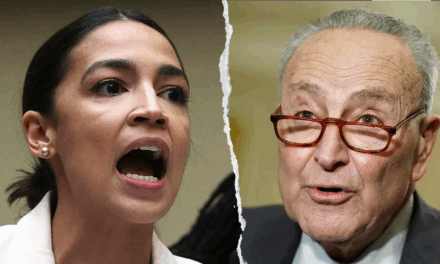The issue of prescription drug prices has long been a troubling topic for Americans, and it has only gained more attention with former President Donald Trump’s initiatives aimed at reducing these costs during his administration. As discussions revive around the effectiveness and implications of these measures, many individuals hold varied opinions on the matter. This article explores the perspectives of the public in response to Trump’s push for lower drug prices.
In a move that aimed to resonate with everyday Americans, Trump introduced a series of actions intended to cut prescription drug prices, making medications more accessible to the general public. His administration emphasized the need for comprehensive reforms that would allow patients, especially those without adequate health insurance, to afford essential medications without facing financial ruin. However, reactions to these policies have been decidedly mixed, with people expressing both support and disagreement on various fronts.
Supporters of Trump’s measures often cite personal experiences as a driving factor in their endorsement of the policies for lowering drug prices. Many individuals have shared stories about struggling to afford vital medications, with some even recounting their battles with chronic illnesses that require lifeline drugs. For these supporters, Trump’s actions are seen as a much-needed step in the right direction. One voter remarked, “My husband is diabetic, and without our medications, we wouldn’t know how we could survive from one day to the next. It’s incredible to see someone trying to take action in this direction.” This sentiment is echoed by many who have felt the financial strain of high drug costs.
Moreover, advocates for lower drug prices argue that the rising expenses associated with pharmaceuticals are a significant barrier to healthcare access. They contend that pharmaceuticals have become so costly that obtaining necessary treatment is often viewed as an unreasonable financial burden. This breed of supporters believes that Trump’s initiatives highlight an urgent need for systemic changes in the pharmaceutical industry. “It’s not just about making healthcare affordable; it’s about ensuring that everyone has access to the care they need to lead healthy lives,” said another supporter.
While a substantial portion of the public has expressed their approval, dissenters have raised significant concerns regarding the approach taken by Trump’s administration. Critics argue that lowering prescription drug prices is not as simple as it may seem, citing potential unintended consequences. For instance, some analysts fear that price reduction could lead to shortages of certain medications or deter pharmaceutical companies from investing in research and development for new drugs. Critics claim, “If companies cannot recoup their costs, then how will they continue to produce innovative cures? It’s a complicated situation.”
Furthermore, skeptics argue that the Trump administration’s focus on decreasing drug prices might neglect some underlying issues in the healthcare system that need to be addressed. To them, simply slashing prices can be a short-term solution that fails to consider the broader picture, such as improving insurance coverage and increasing competition in the medication market. Enthusiasts of this view believe that an integrated strategy, rather than a standalone price reduction policy, is crucial for meaningful reform in the long term.
Political affiliations also seem to play a role in shaping public opinions on Trump’s drug pricing initiatives. Supporters of the former President, primarily Republicans, largely favor his initiatives, seeing them as a necessary intervention. Conversely, those who align with Democratic policies often approach the issue with skepticism. A few Democratic leaders have criticized Trump’s moves as insufficient and lacking a comprehensive framework. This divide showcases the ongoing polarization surrounding healthcare policies in the United States.
Amidst the criticism and support, economic experts have weighed in, indicating that the long-term viability of Trump’s drug pricing directives remains uncertain. They suggest that while immediate price reductions can provide relief, sustainable reform must also consider the economic realities faced by pharmaceutical companies. It is a delicate balancing act that requires a nuanced understanding of the healthcare market and the interconnectedness of drug development and patient access.
Moreover, consumer advocacy groups have added their voices to the conversation, shedding light on another facet of the public response to the drug pricing initiatives. Some organizations have lauded Trump for prioritizing affordable medications, yet they caution against oversimplifying the issue or undermining consumer protections in the process. They stress that maintaining the highest standards for safety and efficacy in pharmaceuticals should remain at the forefront of any policy changes. “We encourage more discussions instead of a one-sided approach. It is imperative to consider all aspects of the drug pricing hunt,” said a representative from one such organization.
At town halls and community forums across the country, citizens have gathered to voice their feelings about the state of prescription drug prices and the government’s role in alleviating financial burdens. These discussions have become increasingly relevant as people grapple with their healthcare needs. Many attendees express concern over the realities of living with chronic conditions where medications play a critical role. One participant shared, “I feel like life is just a constant struggle trying to keep up with these prices. It shouldn’t be this way.”
Another theme that emerges from public sentiment is the pervasive lack of knowledge regarding the mechanisms that drive drug prices higher. Some people admitted their confusion over how pricing structures are determined in the pharmaceutical industry. This indicates a broader issue—the need for increased transparency in drug pricing. Many argue that increased awareness and understanding can empower consumers to advocate effectively for themselves and contribute to policy discussions.
Looking forward, the healthcare conversation continues to evolve. With the general sentiment heavily intertwined with political climate, the former President’s efforts to lower drug prices remain contentious. As individuals continue to voice their opinions, debates surrounding prescription drug pricing are expected to influence future legislative proposals and government actions.
In the wake of Trump’s push for lowered drug prices, the determination to make healthcare accessible is shared across the political spectrum. The discussions occurring on local levels showcase the profound impact of the prescription drug pricing issue on lives across the nation. It is clear that the complexities of healthcare reform challenge policymakers to find pragmatic solutions that consider the diverse needs of Americans. As debates continue, the urgent call for change highlights a common understanding—no one should have to sacrifice their health for financial security.
Ultimately, as Americans react to Trump’s initiatives regarding drug prices, it is apparent that the quest for a more equitable healthcare system resonates widely. There is a collective yearning for stability and accessibility to essential medications, illustrating the necessity for ongoing dialogues that prioritize societal well-being over corporate interests. As the nation grapples with these critical debates, public opinion will play a significant role in shaping the future direction of drug pricing policies and healthcare reform.
































